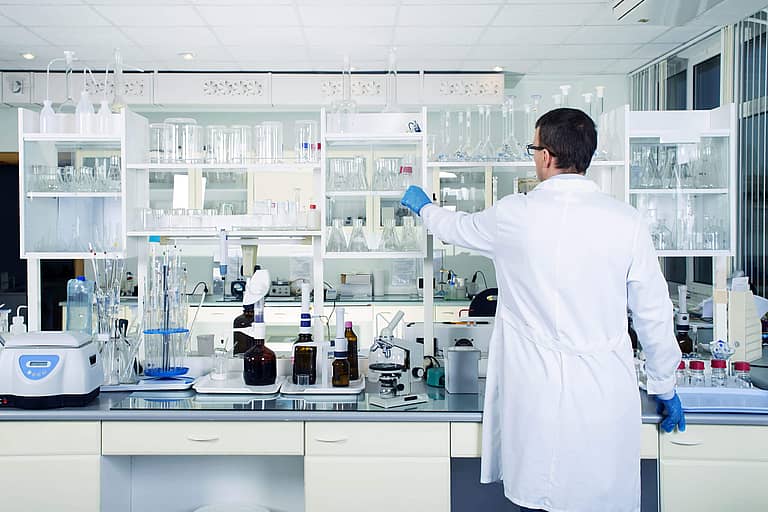March is Workplace Eye Wellness Month, an event sponsored by Prevent Blindness.
This is a great time to evaluate your laboratory eye protection policies and assess compliance with them! Proper eye protection minimizes the risk of significant eye injury and is critical in protecting employees.
Best practice is to require eye protection at all times when working in the lab. At a minimum, laboratory employees should be required to wear eye protection when working with hazardous materials. Did you know that a single drop of a chemical in contact with the front of the eye (cornea) can cause permanent damage within seconds and progress to blindness?
Remember that lab hazards are not just chemical, and that the mucous membranes of the eye are a significant route of exposure for biological materials including viruses and bacteria. In addition, other laboratory eye hazards include exposure to glass shards, ultraviolet light, and lasers.
Eye injuries can occur when protective eyewear is not used, or when the incorrect type of protective eyewear is used. All protective eyewear must comply with ANSI Z87.1-2020, the American National Standard for Occupational and Educational Personal Eye and Face Protection Devices.
Safety Glasses
Safety glasses with side shields are the most commonly used type of eye protection in laboratories. They provide eye protection from moderate impact hazards and minor chemical splashes. Safety glasses have shatter-resistant lenses commonly made of polycarbonate.
OSHA regulations require that employees who wear prescription lenses while engaged in operations that involve eye hazards wear eye protection that incorporates the prescription in its design, or they must wear eye protection that can be worn over the prescription lenses without disturbing the proper position of the prescription lenses or the protective lenses.
Everyday prescription glasses do not provide sufficient protection from laboratory hazards, and therefore cannot be used for eye protection. Employers are responsible for ensuring that employees requiring corrective lenses either wear prescription safety glasses, or wear appropriate safety glasses over their prescription lenses.
Goggles
For some laboratory procedures, goggles may be needed in place of safety glasses. Goggles should be worn when there is a likely risk of a splash of a chemical that can cause eye injury, such as when pouring concentrated corrosive materials. Goggles provide greater protection than safety glasses as they form a protective seal around the eyes and prevent liquids from entering under or around the goggles.
Goggles may be vented or non-vented. Non-vented goggles protect eyes from liquids, vapors, mists, and fumes. Vented goggles protect from moderate quantities of liquids with no potential for vapor or mist exposure.
Specialty eye protection
In some cases, specialty eye protection may be needed to protect against certain laboratory hazards such as lasers and UV light. For laser protection, there isn’t a single pair of safety glasses that provides protection for all laser outputs. All laser protective eyewear should be clearly labeled with the optical density and wavelength from which it protects.
All personnel operating UV light sources with potential exposure, and anyone in the path of UV emissions, should wear UV-protective eyewear. Regular safety eyewear and/or prescription glasses provide little to no protection! ANSI Z87.1 approved eyewear with the appropriate UV rating for the particular equipment being used should be selected.
For additional information on Workplace Eye Wellness Month, or for assistance evaluating your facility’s laboratory eye protection policies, please email us at [email protected].
This blog was written by Beth Graham, Associate Director of Quality, Research, & Training at Safety Partners.


